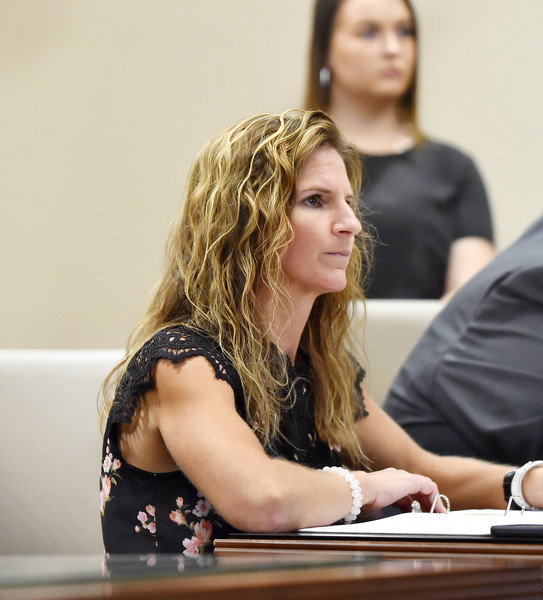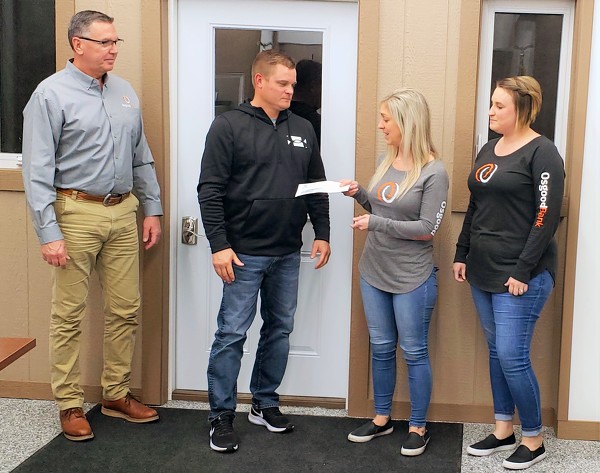Friday, November 11th, 2022
Over There
At the height of World War I - The War to End All Wars - Ludvena Bonifas, then 28, joined the U.S. Army Nurse Corp and left Ellis Island in New York for England and the battlefields of France
By William Kincaid
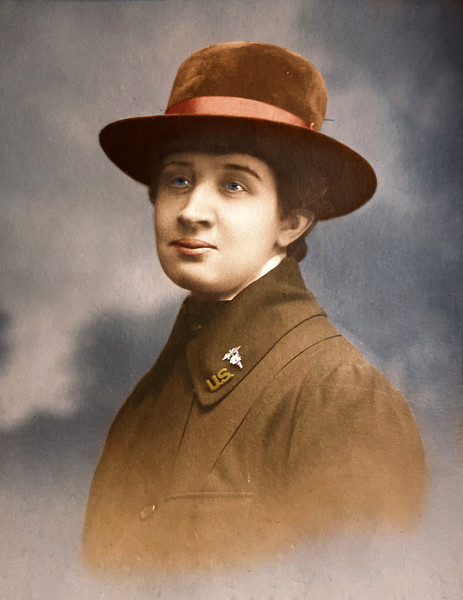
Submitted Photo
Ludvena Bonifas, then 28, in a photograph taken in New York in 1918 and colorized by The Daily Standard's Paige Sutter. She returned from the war, married Frank Hafner and moved to Fort Recovery.
FORT RECOVERY - Over a century ago, an area woman enlisted as a nurse during WWI and made her way to Langres, France, where she tended wounded soldiers.
After serving in the war, Ludvena Bonifas returned from overseas to Fort Recovery, where she carved out a life for herself and her husband, Frank Hafner.
She is believed to be the first woman to join the Fort Recovery American Legion, according to newspaper accounts, records and family stories.
Hafner's life is the focus of a new display at Fort Recovery State Museum. Several items and photographs, among them Hafner's nurse uniform, a U.S. Army issued trunk and diary, are featured in the exhibit which the public is invited to view 11 a.m. to 4 p.m. Sunday.
The items and photos were recently donated by Hafner's family.
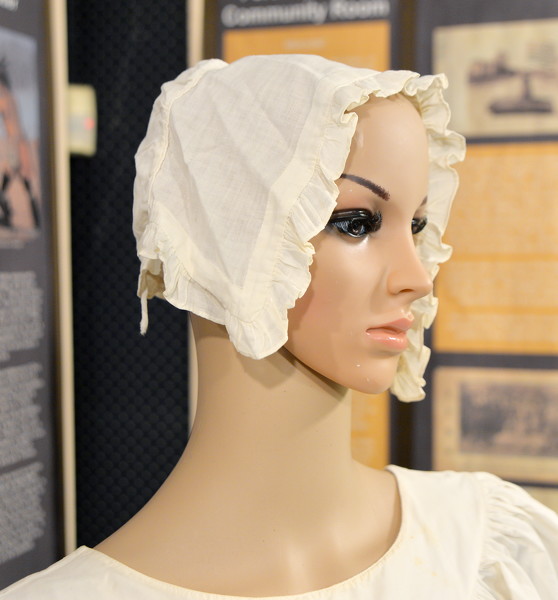
Photo by Paige Sutter/The Daily Standard
The actual nurse's bonnet and uniform worn by Ludvena Bonifas Hafner during World War I. The uniform is among several items on display at the Fort Recovery State Museum.

Submitted Photo
Decoration Day 1918 in England. Ludvena Bonifas Hafner is fifth from the left.
"It's just so fascinating to me," said site director Kim Rammel. "I've lived here all my life and to just stumble across a few items and then to be able to dive into it and find out about this person and how many people she affected, it's a great story. I think people love stories about local people. That's what they want to see. Who lived here before us? What legacy did they leave? I think she left a pretty amazing legacy with her family."
Born Jan. 15, 1890, in Bryant, Indiana, Hafner enlisted as wartime nurse on Feb. 24, 1918. She was 28 years old.
A month before she enlisted, she logged her thoughts in a diary.
"Don't worry about the future. The present is all thou hast. The future will soon be present. And the present will soon be past."
She would soon find herself at Ellis Island inspection station from where she would embark for war-torn Europe.
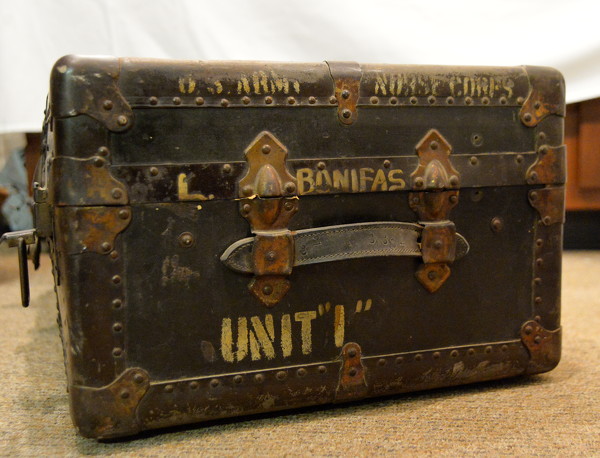
Photo by Paige Sutter/The Daily Standard
The U.S. Army Nurse Corp trunk used by Hafner during the war.
"She left on a steamer ship out of Ellis Island so that trunk probably was on that ship and carried there across the seas," pointed out Kathy Thobe, a member of the Fort Recovery Historical Society.
During the transatlantic voyage, Hafner wrote that a "Sub near fired at us."
"Life belts been out for three days. I will, as sure everyone, be feeling finer since out of danger zone," she had jotted down.
Hafner on March 31, 1918, reportedly arrived in Liverpool, England, to "Bells ringing, chimes, three cheers for the Army Nurse Corp."
From there she headed to "Hospital Unit 1" in Langres, France.
Per one newspaper's account, Hafner's "nursing was done out on the battle fields."
"One could sit for hour and listen to the stories of her direct contact with bloodshed - death and dying, and wounded soldiers," the article reads.
Hafner's diary entry from Sept. 16, 1918, confirms this account.
"Tonight I have 46 patients. Sitting in Ward #3 watching the angel of death take one of our boys who is dying from pneumonia," Hafner wrote. "I am sitting by his bedside. The first death I have seen or been with since I've been in the army. A very sad day to be so far from home."
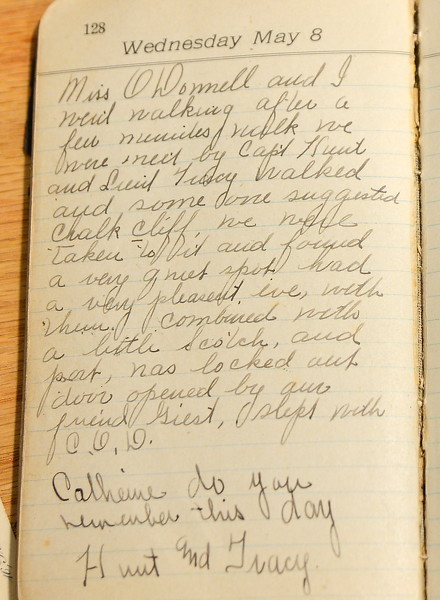
Photo by Paige Sutter/The Daily Standard
A section of the wartime diary of Ludvena Bonifas Hafner, who served in World War I as a battlefield nurse.
Upon her return after a two-year stint in Europe, Hafner would marry and relocate to Fort Recovery where she would live the rest of her life. She had no children but was adored by her nieces and nephews, who referred to her as "Auntie," according to Rammel.
"She came back and settled in Fort Recovery. She lived on Wayne Street, 510 Wayne Street," she added. "She lived there, I assume, her whole life. She never drove. She never had a license. Her husband died quite a few years before her."
Hafner died at 76 on July 10, 1966. She was given a military funeral and laid to rest at St. Mary's Cemetery in Fort Recovery, Rammel said.
"Her great nephew, Frank Bonifas, recalled that at the time of her death undertaker Cy Brockman commented that it was the most attended funeral he had ever handled," Rammel said.
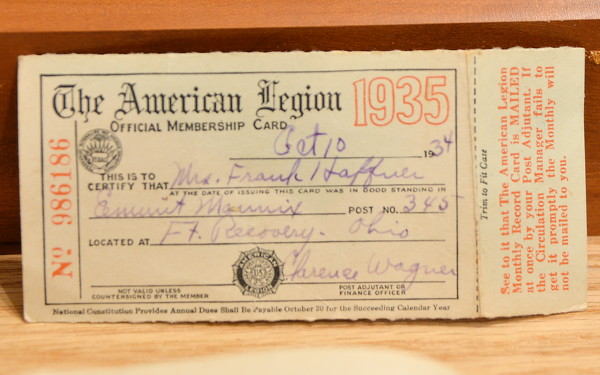
Photo by Paige Sutter/The Daily Standard
Hafner's American Legion membership card for 1935.
Within her trunk donated by the family was a diary, prayer book, American Legion card, arithmetic book and clippers. There's also the nurse uniform, a collapsable, leather kit, an American flag that likely adorned her coffin before it was put in the ground and a pair of high button boots that could pass for fashionable today.
They're all included in the display.
Museum officials, though, do not have a complete picture of Hafner's life and seek additional details.
"If these boots could talk, what would we learn?" Rammel wrote in a post on the museum's social media account. "I'm continuing my history sleuthing to flesh out her story and give it life. If anyone has any information, let me know."
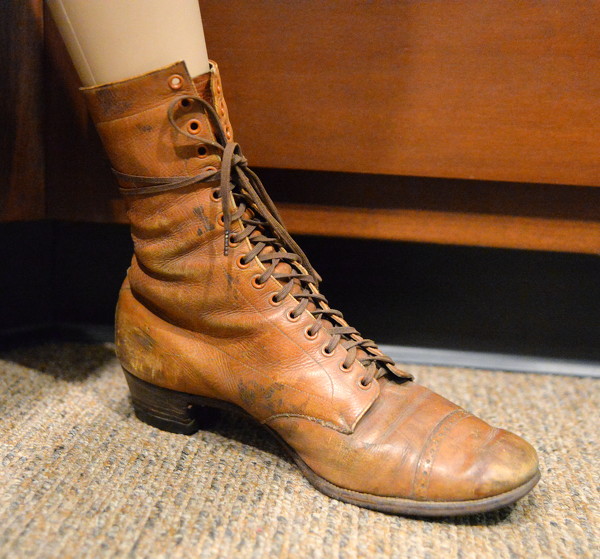
Photo by Paige Sutter/The Daily Standard
Among displays at the Fort Recovery State Museum are shoes worn while Hafner was in France during World War I.







